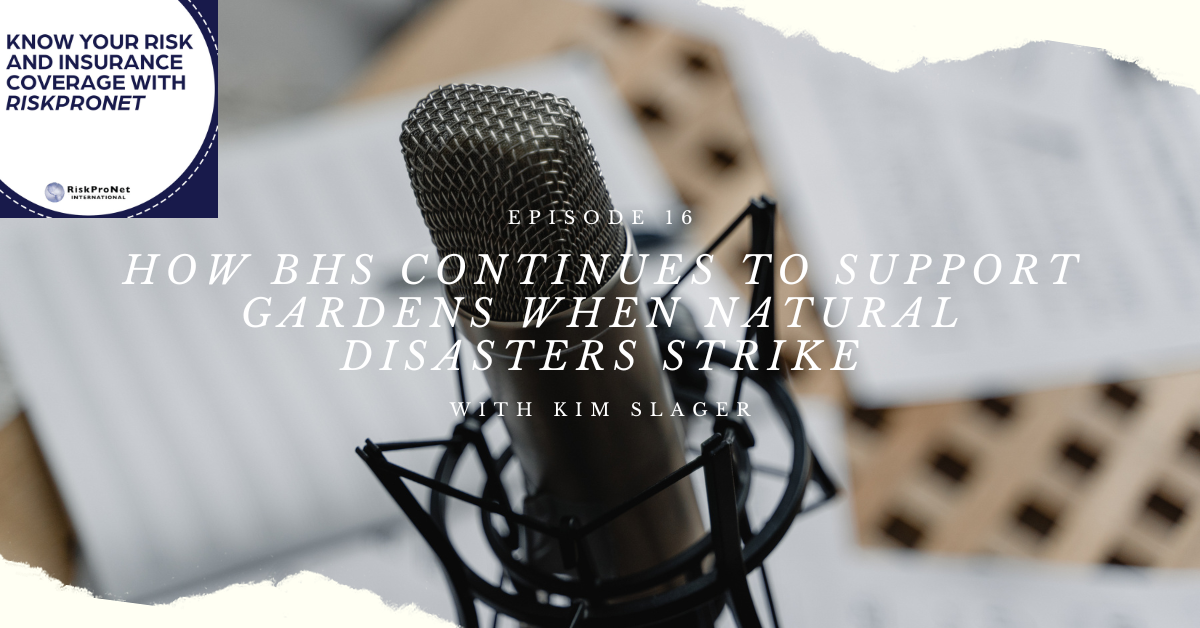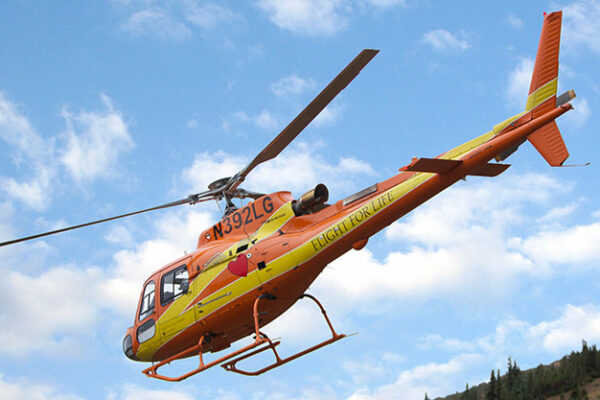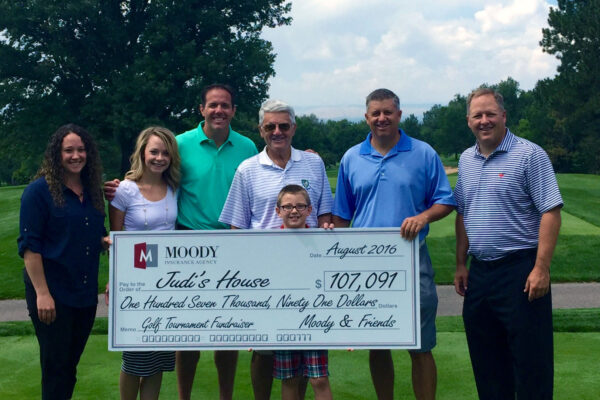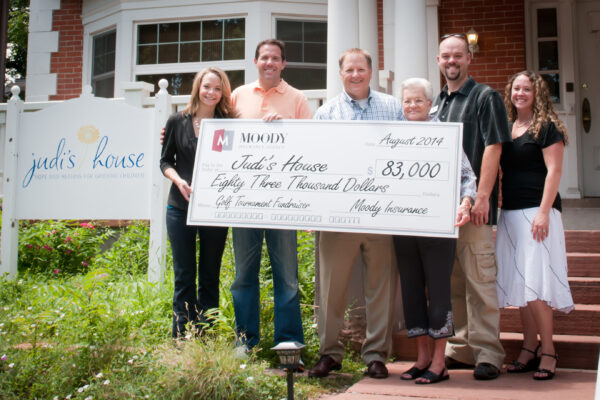In today’s episode, Chip is joined by Kim Slager, partner at BHS Insurance. Kim specializes in the public garden space. She is the team leader for the BHS proprietary national public gardens program. Kim has been in the insurance space for a little over 28 years and has been with BHS for 11 years.
BHS Insurance has been providing superior service and managing insurance for over 80 years. They are a leading insurance provider that finds innovative solutions to those who value individualized services and shared passions for helping others.
Chip and Kim dive into:
The Botanical Gardens and how she got involved. The Grand Rapids Garden, the community, and 5O1C3 gardens. Preserving native gardens and the importance of keeping them safe. The importance of passion and how that correlates to running and maintaining a program. Unique challenges that Kim has had to face and the challenges of property insurance. How BHS benefits and provides for both small and large gardens. How they supported and safely helped gardens open back up after COVID. Insuring gardens when and if a natural disaster strikes one of their gardens. …and much more!
Support Gardens When Natural Disasters Strike with BHS Insurance Transcript
00;00;02;01 – 00;00;18;29
Chip Arenchild
Welcome to Know Your Risk and Insurance Coverage with Risk Pro Net, where we will discuss all things insurance for you and your company. Risk Coronet is a network of independent agencies who offer specialized insurance across business sectors.
00;00;19;01 – 00;00;46;03
Chip Arenchild
Regardless of where you are in your insurance journey. We want to invite you to join us to think about insurance differently. Know your risk and insurance coverage with risk Pro Net provides answers to all your insurance questions. Welcome everyone to Risk Pro Net and know your risk and insurance with Risk Pro Net. Today, we’re talking to Kim Slager from member agency in Grand Rapids, Michigan.
00;00;46;03 – 00;00;47;24
Chip Arenchild
Kim, how are you this afternoon?
00;00;47;26 – 00;00;50;06
Kim Slager
I’m doing great. So how are you doing?
00;00;50;07 – 00;00;57;06
Chip Arenchild
Good. Have you been able to survive the wild weather that the whole nation has been experiencing here for the last couple of weeks?
00;00;57;09 – 00;01;04;27
Kim Slager
We, Mother Nature still seems to think it’s winter around here, so we’re ready for a little break, but, that’ll come hopefully in April.
00;01;04;29 – 00;01;20;01
Chip Arenchild
I hope that it. What is it? March is like a lion. And then April’s like a lamb or something. We’ve been living in a snow globe out in Northern California. I think we have over 52ft. It’s going to be the largest year ever. So it’s been interesting, that’s for sure.
00;01;20;03 – 00;01;22;22
Kim Slager
It’ll help with those droughts later. Right?
00;01;22;24 – 00;01;48;14
Chip Arenchild
I hope so. I don’t think it’s going to help with our wildfire problems though. So. So Kim, I’m really excited to talk to you today, mainly because we know each other from some of our involvement and risk net, but also because of what you specialize in and and what I want to get to our members today is to talk about what it means to create a program manager program and make that a viable part of growing your block, and something for growing the revenue of the agency.
00;01;48;14 – 00;02;06;25
Chip Arenchild
And so for those of you who would not know, Kim happens to specialize in the public garden space and has a program. I call them botanical gardens. However, I like public garden spaces better. Kim. Kim, tell us a little bit about how you ended up in that niche with public gardens.
00;02;06;28 – 00;02;42;23
Kim Slager
Yes. So Best Insurance, located in Grand Rapids, Michigan, saw a need for proper insurance and strong risk management for public gardens over 20 years ago. So, locally here in Grand Rapids, we have the privilege of visiting the Frederick Meyer Gardens and Sculpture Park. And when it was being built over 20 years ago, it was realized by some board members that there was not a good fit for an insurance product for public gardens there, you know, somewhat little miniature cities.
00;02;42;24 – 00;03;05;27
Kim Slager
They have event space, they have outdoor collections, they have fine art collections, they have volunteers, they have mobile equipment, you name it. They run the gamut of various risks and exposures, and you sit down with an underwriter, an insurance company, and they’re not quite sure how to process all that because we’re not we’re a living museum versus a four walled museum.
00;03;05;29 – 00;03;07;21
Chip Arenchild
Can you ensure the plants?
00;03;07;24 – 00;03;11;16
Kim Slager
Well, I wish we could. There there’s not a great response for that.
00;03;11;18 – 00;03;28;14
Chip Arenchild
And that’s all right. I just curious because when you describe that, I would not have thought about that, about all the different exposures that you might have. And I can easily see where an underwriter, if you’re talking to them, could get past 2 or 3 of them and then throw their hands up and say, no, we can’t do that well.
00;03;28;15 – 00;04;03;16
Kim Slager
And you get into the mix. You know, a lot of times we’re serving a variety of age groups, and a lot of times we may be serving youth. And nowadays with abuse and molestation risk and exposure, our underwriters even backpedal on that and that at risk. We serve a lot of the elderly population, for example, too. When you think about, who is coming to visit public gardens, that’s changed over the years and I will applaud you, the American Public Gardens Association, for really digging deep, quote unquote, and, helping to diversify their audiences as well.
00;04;03;16 – 00;04;21;14
Kim Slager
So, you know, we have multitude of different conversations, whether it’s dealing with our event planners or dealing with our volunteer managers, our finance departments. There’s a multitude of things that, you know, like you said, some insurance carriers really understand. And then just like other components of it.
00;04;21;17 – 00;04;42;16
Chip Arenchild
Kim’s actually been in the insurance space for 28 years. Kim, I think it’s right. You’ve been with us for 11 years. Your principal or a partner there? You’re technically savvy and maybe the expert in the industry in your shop about when people have questions and coverage. And so I would think that lends itself very well to the skill set needed to try to put a program together.
00;04;42;18 – 00;04;53;23
Chip Arenchild
The garden that you guys have in Grand Rapids, what makes it unique that started 20 years ago? You don’t think of Grand Rapids as a hub of horticulture, and that may just be ignorance on my part.
00;04;53;25 – 00;05;19;26
Kim Slager
Well, it you know, my the program started by my predecessor, Sharon Van Loon, who was serving a local nursery group here, which is still locally owned and operated, called the Flower Land. And the gentleman who was president of that company served on the board for what was then called the West Michigan Horticultural Society. And they had the vision with 100 acres to start with.
00;05;19;26 – 00;05;41;26
Kim Slager
Where do we expand and how do we grow and how do we do that thoughtfully? And what policies and procedures do we need to put in place so that we do it in a proper way? And when Sharon was working with the board member, he said, you need to come in here, talk to our people, understand what we do, help us do it better, help us become, you know, a vision for what other gardens could do across the country.
00;05;41;26 – 00;06;04;19
Kim Slager
And, really built upon that. And then that led to the next garden and the next and then a conversation with the American Public Gardens Association, which is located in Pennsylvania. And Sharon was able to speak to their board at a larger basis and said, absolutely, we need somebody to shepherd our gardens on risk management. How do we better protect ourselves?
00;06;04;21 – 00;06;38;01
Kim Slager
This all of the public gardens or most of the public gardens are 501 C3 organizations. Some of them are affiliated with colleges, universities, cities, counties, townships. So the gardens that we serve are predominantly the 501 C3 separate standalone. And, you know, they don’t enjoy the same protections that municipalities do or that schools do. And so, you know, teaching them, what those risk factors are and how they can protect themselves, has really been, I think, integral we like to say we help public gardens become safer places.
00;06;38;03 – 00;06;56;26
Chip Arenchild
How great and, and I would also imagine the people that want to build the garden and display, you know, that they love flowers and art and a living art. They’re not thinking about the other. The risk management side of things. Right. This is how do we get this built in the Master Gardener programs. And there must be so many beautiful ones around the country.
00;06;56;26 – 00;07;03;07
Chip Arenchild
And because it is art, and it’s in the people that are passionate about flowers are very passionate people, aren’t they?
00;07;03;09 – 00;07;27;05
Kim Slager
Well and very much in the sustainability space, too. Our public gardens are key in making sure that our collections can be replicated and that we don’t have extinct local species, especially native gardens, making sure that communities understand how they can garden at home, and why native gardens are important to that and to the greater conversation and in the climate.
00;07;27;05 – 00;08;03;20
Kim Slager
So absolutely, it’s and, you know, our conversations range from a CFO to the head of botany to the volunteer manager and events. A lot of times our gardens are looking for ways to generate new revenue and oftentimes when new revenue comes in the conversation, there’s new risk. And we get a lot of creative ideas and a matter of flushing those out to understand which ones make sense and are part of our mission and which should be probably taken a little more critically looked at.
00;08;03;20 – 00;08;08;06
Kim Slager
So I always try to get to yes, but sometimes we have to say no.
00;08;08;08 – 00;08;32;07
Chip Arenchild
I would imagine, I would imagine talking today. Reminds me, on the sustainability issue, right, with there’s almost a linkage between public space and gardens and outdoor thing and this the food movement that we’ve been going through. Right. And I think they’re combined and it’s all all around that same issue. It also reminds me a I had a botany class in college, and it was actually one of my favorite classes where we went around.
00;08;32;07 – 00;08;47;18
Chip Arenchild
It was in down, I went to school in Santa Barbara, and we just keyed all the various plants in the area. Right. And, you know, so there was a group of us friends we got pretty good at keying plants and, and that actually and creating a pressed flower collection. And there’s quite a fun when I did that.
00;08;47;21 – 00;08;52;13
Kim Slager
And there’s a few there’s a few beautiful botanical gardens in Santa Barbara too.
00;08;52;15 – 00;09;02;02
Chip Arenchild
Yeah, it’s a nice spot, that’s for sure. I bet you’ve seen a bunch of beautiful ones all over the United States, haven’t you? Yeah, absolutely. Are there any that are your favorite or that you really like to go to?
00;09;02;04 – 00;09;27;24
Kim Slager
That is a tough one. I they’re all my favorite in different ways. There’s beautiful small arid gardens and there is large 1200 acre gardens and there’s arboretum that, you know, are just vast open spaces that people can walk in, be in nature. And so they’re all wonderful and they have their own mission. And, and we try to cater to all type.
00;09;27;27 – 00;09;47;18
Chip Arenchild
Yeah. Matt. So, Kim, I know that a lot of brokers are interested in putting programs together and they want to chase things that they’re interested in, but they may not know how to get started or what it really looks like to run a program after you have it established, can you give us a little insight on what you do to keep this program up and going and maintaining it?
00;09;47;20 – 00;10;27;29
Kim Slager
Absolutely. The big thing that you hit on was passion. You have a passion for this group of people, and do you want to help them succeed? And for us at DHS, it started with Sharon seeing the vision, being invested in horticulture, understanding that public gardens are important places for us to have in our communities, and how do we wrap ourselves around them and support them, and then having an insurance carrier see them for that as well, rather than just unique historic older structures that might not fall in their appetite or, you know, trails of natural paths that cause, hidden conditions that people can slip and fall.
00;10;27;29 – 00;10;53;01
Kim Slager
But really, to see the bigger, vast picture of the importance of public gardens and how do we support them and how do we do it in a thoughtful way so that we can protect guests who are coming to these spaces and employees and and make sure that we’re doing it in a long term way so that an insurance carrier is not getting in and out of the market, but sees the sustainable nature of it for a long term commitment.
00;10;53;08 – 00;11;10;06
Kim Slager
And that’s what we’ve had for over 20 years, partnering with pretty much the same core insurance carriers who have seen the growth of the program, who have understood, our unique challenges and have helped us collectively address them.
00;11;10;08 – 00;11;25;12
Chip Arenchild
That’s wonderful. What are some of those unique challenges that you face with this class of business? I can I can only imagine after you gave us that list of all the different exposures, what it what what are the things that make your alarm bells go off or that are the unique challenges?
00;11;25;12 – 00;11;50;15
Kim Slager
Well, I think any insurance broker right now would lament about property, insurance and the catastrophic, nature of whether we have a garden in California with a wildfire or a garden in Florida who just experienced a hurricane, or during the Midwest, where we’ve seen, massive storms come through derecho. Whoever knew what that word was before. And now we’ve seen those multitude of times.
00;11;50;17 – 00;12;13;28
Kim Slager
Texas the same. So property insurance just is a big challenge. And many of our gardens have just stunningly beautiful, structures, conservatories, a state gardens that have been turned into an original state, that have been turned into public gardens. So we have some very unique structures that we have to think about. Are they on the National Historic Registry?
00;12;13;28 – 00;12;32;11
Kim Slager
And if they are, how do we make sure that we can construct them and build them back to the way that they were? So partnering with appraisers who understand who we are, what we do, and that we don’t want a four walled steel building when we’re done, we want to build back what we had before and maintain the historical nature of it.
00;12;32;14 – 00;12;56;06
Kim Slager
So certainly property is our challenge, and that’s everywhere right now. The other issue we see is social inflation and the issue of everybody wanting a piece of the proverbial pie when it comes to lawsuits. And believe it or not, there are people out there who are going to sue, five with one C3 nonprofit. And, certainly they see the insurance carrier is participating in that.
00;12;56;06 – 00;13;20;22
Kim Slager
So slip trips and falls are our number one challenge right now. And just so making sure that we’re doing our due diligence and operating our duty of care, have we inspected those sites? Do we have checklists on those? Do we make sure that if we have an unsafe condition, we’re addressing it so that when the bad day happens and we’re being accused of something, that we’ve got good strong documentation to show that we indeed do the right thing.
00;13;20;24 – 00;13;41;23
Chip Arenchild
And how do you, as the broker, align services from VHS and provide those values to your members of the program? Do you have an inspection thing that you go through with them? Is that part of the benefit of why they need a specialist and why they want to use VHS? If you’re in this public garden space to be a broker of representation, absolutely.
00;13;41;23 – 00;14;18;02
Kim Slager
We have invested a lot of time, hours, sweat, tears into providing tools and resources to our gardens. So everything from training staff and volunteers to providing policies and procedures and checklists and just really opening their eyes to what risks are out there and making sure that each section of their program, their team, knows that we exist and can use us for resources, whether it’s guiding their volunteers or helping them put in a golf cart safety program.
00;14;18;02 – 00;14;27;14
Kim Slager
So it really does run the gamut when it comes to the public gardens, which makes it so much fun because we’re always doing something different and something unique.
00;14;27;17 – 00;14;54;05
Chip Arenchild
Yeah, I could see where they would bring a lot of fun challenges to to think about. I know having this program, you’re part of these associations and, and there’s probably there’s has to be a tremendous amount of these across United States and probably both North America. Is it only for the large members that benefit from the services it offers, or is it something to tell us about who, who, who should joint best to take advantage of these wonderful services?
00;14;54;12 – 00;15;24;23
Kim Slager
Yes. Great question. The American Public Gardens Association has over 900 members, and they range from a public garden who may be completely managed by volunteers, to a very large garden who has over 500 employees. And we really work through all of them. We find ourselves, because we’re committed to the American Public Gardens Association, and we make sure that we extend our resources to all.
00;15;24;23 – 00;15;54;04
Kim Slager
So we don’t have a threshold in which we require, the small gardens may need as much help as the large gardens, and we just see it as a pay it forward. Some of the small gardens, I mean, Fred Meyer Gardens, for example, started out with volunteers and now they have 150 plus strong. And, we work with a garden that used to be a dilapidated, a city owned golf course that now is a thriving, beautiful, sustainable public garden with 50 plus employees.
00;15;54;04 – 00;16;24;13
Kim Slager
So we really do, try to serve all. And I think everybody can benefit from what we provide because so much of what we can do can be part of that back room support for all the different divisions. And when you are a large, sophisticated garden, your problems or challenges can only get to be more multiplied. And so by plugging in with each of those different groups, we can really help alleviate some of that stress upon a garden, whether they’re big or small.
00;16;24;15 – 00;16;40;13
Chip Arenchild
Well, it also sounds like then, if I’m hearing you correctly, you can help a garden, no matter what size they’re in, to transition up to the next step. That idea that when you’re at the top of one ladder step, you go, you know there’s one above you. And and everyone’s trying to find a way to improve and be better.
00;16;40;13 – 00;17;06;25
Chip Arenchild
And you can really groove in to that management team and provide some, some support and resources to allow them to do that and maybe not make that mistake that they could have made if they were doing it on their own. That’s wonderful that you’re and it’s wonderful that your program doesn’t have a bottom to it, to where you’re so many things are like, oh, if you’re not in our club because you’re not big enough, and yet you hear you’re welcoming all and want to provide your resources to, oh, I think that’s great.
00;17;06;28 – 00;17;32;12
Kim Slager
Absolutely. And we have so many people that have started in one garden and move to another. And maybe they started in horticulture and advanced into development and changed over to become wanting to become an executive director. It’s it’s been really exciting to see some of these people work through and grow in and become the next leaders of public gardens, and we’re just grateful to be a part of it.
00;17;32;15 – 00;17;52;25
Chip Arenchild
It comes through in you talk. And also, I think it what I hear in your voice is just the enthusiasm for the space. And know that I know you like to garden, and I know that you do have a passion for the plants. And so it comes across really nicely. Is there any correlation with the uptick in where we’re starting to see community food gardens just out of curiosity?
00;17;52;25 – 00;18;09;28
Chip Arenchild
Because that has been something here in California. And we’ve experienced where almost every community is trying to do a public garden or something. And I think we’re going to see more of that as a sense to try and build community. Is there is that ability for you to segue into that side of the marketplace, or is that would that.
00;18;10;01 – 00;18;35;08
Kim Slager
Really there is the public gardens are very much about education and helping the local community understand where their food comes from, how it’s grown, how it can be, grown without being heavily laden with pesticides and herbicides and being able to have that farm to table and understanding that and getting out to the deserts of the cities that don’t have fresh food and providing, those services to them.
00;18;35;08 – 00;18;54;29
Kim Slager
So many of our gardens do a lot of community outreach. Are helping to set up, community gardens and support them so that they can have the availability of fresh produce, in their community direct and have a better appreciation for what they’re putting in their bodies and understanding that all of that is important to our overall health.
00;18;55;01 – 00;19;10;22
Chip Arenchild
I love that, and I think as we move out of this, I joke like, hey, what are we supposed to do? This are a first post-Covid phase, right? But as we really move into it, I do think we’re going to see an emphasis on community. And I think gardening, it’s going to be one that’s been established that could easily be a good leg.
00;19;10;22 – 00;19;11;23
Chip Arenchild
So let’s.
00;19;11;28 – 00;19;22;02
Kim Slager
Pull together. And it’s hard to argue about plants, right? I mean, you don’t have to know much about them. They can just be pretty if that’s all that you want to know. But it’s just something that I think brings communities together.
00;19;22;04 – 00;19;41;11
Chip Arenchild
Yeah. And I’ve always the wonderment of a little seed that you planted as a kid, and then to watch it sprout and grow into the leafy thing and produce fruit is always is just, an amazement thing to do. As you started off today, you mentioned that, you know, they have a just a gamut of exposures as cyber and exposure.
00;19;41;12 – 00;19;58;02
Chip Arenchild
I know some are free, some have charges, some have some point of sale systems. And and they have a whole donor base to be worried about and things like that. So what are they interested in fixing right now or what do you think is some of the issues they need to fix or not need to fix, but just that you want to make it on the forefront to protect them?
00;19;58;04 – 00;20;19;05
Kim Slager
Well, certainly cyber has been on the forefront in the last couple of years and making sure that we can qualify for the insurance and and in making sure that we have the proper coverage in place. We’ve seen ransomware attacks on our point of sale system, where it’s shut down a garden for several weeks, and they can’t welcome guests into their space because they have no way of doing that.
00;20;19;08 – 00;20;39;13
Kim Slager
So aligning with, and understanding who their third parties are, that they rely on, there’s very a lot of popular software out there there they used by the nonprofit community, one of which, a couple of years ago had a breach which affected a lot of people. So we were very grateful to lean on our cyber insurance policies to help us know how to respond.
00;20;39;15 – 00;21;03;18
Kim Slager
So they’re not absent from that same risk like everybody else’s. But certainly we have seen it in the nonprofit space and specifically with public gardens. You know, the other thing, too, that a lot of our gardens do is travel internationally. You know, they’re out in and after Covid, certainly we’re seeing an uptake in that. But we have members that travel to collect seeds to bring them back to replicate collections here in the United States.
00;21;03;21 – 00;21;23;00
Kim Slager
You know, have a beautiful garden in California that has a beautiful Chilean garden. And, they have been down there a number of times to to collect plants to bring back. And we see that commonly, and so managing that risk and, you know, we all saw the headlines not too long ago with Mexico. And, how do we do that safely?
00;21;23;00 – 00;21;28;15
Kim Slager
Because sometimes when we’re collecting seeds, we might be out in the midst of a nowhere, literally.
00;21;28;15 – 00;21;34;29
Chip Arenchild
So, yeah, I can I can imagine myself a little foreign exposure as well at times.
00;21;35;02 – 00;22;01;01
Kim Slager
Yes. But just keeps us on our toes. And that’s what I think every day is a new challenge. And we see trends too. You know exhibits are a popular thing as well. We love to get our guests and our members excited about coming back to the garden. So we see truly there’s the Lego and Nature Connects. There’s trolls, which is a very large collection of recycled wood that is lifelike trolls.
00;22;01;01 – 00;22;19;29
Kim Slager
And so we see a lot of those common themes to come through. And how do we ensure those and how do we protect them? And contractually, are we fulfilling our obligation? And who’s responsible for what and when? So, you know that the fine art piece of it’s kind of fun, too, and it’s neat to see, all the new exhibits coming around.
00;22;20;01 – 00;22;30;06
Chip Arenchild
I’m glad to hear people are getting back out. I think that’s going to be a theme for the rest of this year. Right, people? Despite whatever recession things we’re talking about, people want to get out and start seeing things again and doing things again.
00;22;30;06 – 00;22;52;04
Kim Slager
Well, I will say two of the public gardens, during Covid were some of the first places to open up. And we were very involved with the American Public Gardens Association and helping them to establish protocol and safety. And some of us were shooting from the heat. All of us were shooting from the hip. Right. It was new to everybody, but we helped support, you know, best practices and reopening.
00;22;52;04 – 00;23;07;10
Kim Slager
And we are grateful for public gardens to be open when many weren’t, when many other events and places to go were closed. I think it was definitely a place of refuge for many people, and that’s been something that the public gardens have continued to build on.
00;23;07;12 – 00;23;21;28
Chip Arenchild
So Kim, I’m an executive director of the Public Garden, and I’ve had some broker who I can imagine has been on the board or is a member of the community. And, and they’re just like, oh, you can just do this. Why do I need Kim and Bob’s?
00;23;22;00 – 00;23;47;13
Kim Slager
The devil’s in the details often in our business, and we work to make sure that the insurance company fits all aspects of the garden. There’s a lot of insurance companies where you can all the carte things together, but we want to make sure that we’re comprehensively looking at all aspects of it, and we do get challenged by that.
00;23;47;13 – 00;24;12;08
Kim Slager
There’s always an insurance person on a board and, we do battle that. But when we work with clients and we work with all their various departments, they see the value we bring to help supporting them and safety and understanding their unique risks. And the longevity of the program. We’ve been doing it for 20 plus years. We’re going to continue to for 20 more.
00;24;12;13 – 00;24;41;20
Kim Slager
And the insurance partners who have been working with us have been consistent in staying in it. Everything can run hot and cold, and when you’re in a hard market like we are right now, we’re grateful that we have providers not backing down on limits, not, being critical of every little nook and cranny, but really kind of holistically looking at the investment they’ve made over the long term, along with us to make sure that, we stay consistent and our CFOs can budget accordingly.
00;24;41;20 – 00;24;42;29
Kim Slager
For that.
00;24;43;01 – 00;25;07;17
Chip Arenchild
It’s nice. Yeah, it does show the need for specialization in this industry, for sure. And I think there’s this is a great example of it. Are you using any of the the up and coming parametric products at all built into your program? I would just be curious with if you can’t insure the outdoor plants. I believe you said that although clarify me if I’m wrong, can you head your bet to a certain degree in case some wild hailstorm comes through or something like that?
00;25;07;20 – 00;25;09;06
Chip Arenchild
Is that possible? How are you doing that?
00;25;09;06 – 00;25;39;22
Kim Slager
Yeah, that’s a great question. Certainly our outdoor collections are at risk to Mother Nature. And as a result, the insurance industry in the standard market has not been, open to wanting to insure trees that blow down and open spaces and cost lots of money to have to remove them. So, you know, we take a two pronged approach to that, one being recognize what insurance you have and what you don’t so that you can fund for that natural disaster.
00;25;39;25 – 00;26;02;09
Kim Slager
If and when it happens. And to consider parametric products, because depending on what your risk is, if it’s wind or if it’s flood or if it’s wildfire or whatever area it may be, the beauty of the parametric product is you pick what your peril is, you pick for how much you want, and if that happens, you get paid.
00;26;02;12 – 00;26;29;25
Kim Slager
There’s not an issue of covered property or uncovered property, it’s just a matter of if the event occurs. So something that is, you know, newer in the marketplace, we’re staying akin to it and always and trying to find, you know, pricing that can be budget friendly. So we’re anxious to see more options come down the road, certainly for our smaller gardens, that it’s a pretty expensive product for them to entertain.
00;26;29;27 – 00;26;57;09
Chip Arenchild
Exactly. But it is interesting again how this input of data into our business and the creation of these products really can solve a niche or help fund something that previously couldn’t get done. I would also imagine this has got to be a highly collaborative space between the associations you belong to and the executive directors at gardens. I would think that if you’re at one garden, your next move maybe up to a bigger garden or something like that, like it’s a unique skill set.
00;26;57;09 – 00;27;09;16
Chip Arenchild
So is there. Tell me about the collaboration within the space and inside your program, and how do you use that to, continue to build more members and make your program better?
00;27;09;19 – 00;27;31;24
Kim Slager
Well, we are our preferred partner for the American Public Gardens Association. So we help support them so they can support gardens of all sizes and types, whether they’re a nonprofit or owned by a university. So our investment into risk management and giving guidance to the holistic membership group of APGa, is certainly something we’re completely committed to.
00;27;31;27 – 00;27;56;00
Kim Slager
And the collaboration is fantastic with this group. I think that’s what I enjoy the most. It’s, you know, I call it good R&D rip off and duplicate, right? If somebody has done it before, share that with somebody else. And this group does that so much. What I enjoy is connecting clients to other clients and, you know, volunteer managers to other volunteer managers so that they can learn from each other and grow as a group.
00;27;56;02 – 00;28;20;16
Kim Slager
We belong to, as part of the American Public Gardens Association. They have various symposiums where it’s a smaller, more, directed group such as development, you know, colleagues getting together, finance and operations volunteers, the fine art component. And we try and plug ourselves into all those different aspects so that we can help answer questions and, you know, set them up for success.
00;28;20;18 – 00;28;23;05
Chip Arenchild
Well, it certainly seems like you know, their business.
00;28;23;07 – 00;28;30;26
Kim Slager
Yes. Well, right. We’ve it’s it’s, a labor of love on many levels. And we’re just grateful to be a part of it.
00;28;30;28 – 00;28;49;07
Chip Arenchild
So when you were describing the collaboration there between the gardens, it sounds so sounds like what we’re doing with Risk Net. And I know you guys have been members now for a while. What has been the benefit for, you know, you as a individual producer as well as for the firm and joining and being part of risk prone it.
00;28;49;09 – 00;29;21;11
Kim Slager
We are so blessed to be a part of RPA, and it has been wonderful to have such an a highly regarded group of colleagues that we can lean on so that, you know, when we are working in states where it might not be the every day we can lean on somebody like Chip and California to talk, shop with and, you know, garden or risk prone out partners in Florida or all around the country.
00;29;21;11 – 00;29;42;09
Kim Slager
It’s been just tremendous to have, that sort of relationship with really well-run, independent agencies that are very like minded. So it’s it’s been tremendous and I know and very different levels, whether whatever group we’re part of, just the caliber of the individuals has been fantastic.
00;29;42;12 – 00;30;00;08
Chip Arenchild
I would share the same thing when I, when I talk to people about it, in terms of having a network that you can reach out to, send a message to a group of people that are pretty smart and well-versed and be able to get an answer that helps you solve your problem pretty quickly is I find it invaluable.
00;30;00;08 – 00;30;28;02
Chip Arenchild
And I see that across all the different spaces that we have specialization. And I know you’re part of the cyber group as well. And, you know, we have the construction practice group and cyber and handful of other. So I think that just that collaboration described is so important. And it’s really important right now as we’re moving out of this Covid site, right, to start talking to people and lean back in, I think there’s going to have to be, everyone consciously leaning back in and trying to reconnect after three years of building new habits.
00;30;28;05 – 00;30;38;20
Kim Slager
Yeah, I agree. And, you know, it’s it’s the old adage of phone a friend, right? And everybody needs that. And it’s just we’re blessed to have instantaneous access to so many talented people.
00;30;38;22 – 00;30;56;15
Chip Arenchild
I agree. How much time on the program? I’m curious, do you spend having to aggregate data and try to show trends that you can use to help leverage? Hey, listen, they’ve had some losses, but here’s what we’re really seeing and here’s the plan we’re going to fix. Are you able to start utilizing data to help promote all your members?
00;30;56;17 – 00;31;19;02
Kim Slager
Yeah, absolutely. And and we have ever blessed that we have two full time safety advisors on staff, and we have two full time, clean people who are taking data from our carriers and us partnering with our carriers to aggregate the information. What we’re saying, I mean, down to the nitty gritty of if there’s security or first responders on staff at the public garden, what are they wearing?
00;31;19;02 – 00;31;41;27
Kim Slager
Do they look like friend or foe? Are we wearing, you know, a security guard sort of looking, or are we wearing a polo shirt and a pair of khakis? So it’s as granular to that level, that we’re trying to identify where these trends are happening. So, data is big and, and we’re only going to continue to use that and more meaningful ways that can be supportive to the day to day.
00;31;41;29 – 00;32;00;19
Chip Arenchild
Yeah, that’s a great I mean, I think that’s a great story, right? When you can say, listen, we need our responders to dress a certain way, that’s bringing a lot of value that I think people wouldn’t think about normally. And that I think is where our industry is headed to. Right. As you specialize in a class of business like you’ve described today, you’re able to articulate what their needs are.
00;32;00;25 – 00;32;13;18
Chip Arenchild
You really are part of that management team for all those members. And everyone collectively is benefiting from the fact that you have a passion to make sure public gardens are insured and function well and available to the public.
00;32;13;21 – 00;32;14;15
Kim Slager
Amen.
00;32;14;18 – 00;32;32;25
Chip Arenchild
Amen. All right. Well, can’t listen. Thank you so much for taking some time to visit with our podcast today, and it’s just a pleasure to have you on. If anyone wants to get in touch with Kim will have all of her contact information in the show notes. We’ll also have some links, I believe, to the associations you’ve referenced as well.
00;32;32;27 – 00;32;36;05
Chip Arenchild
So, Kim, anything else you like to say before we leave for the day?
00;32;36;08 – 00;32;41;06
Kim Slager
No. Thank you. Get outside. Go garden. Hug a tree. Save a plant.
00;32;41;08 – 00;32;46;05
Chip Arenchild
There we go. All right. Thanks, Kim. Enjoy that. Spring, when it finally shows up.
00;32;46;07 – 00;32;46;22
Kim Slager
We’ll do.
00;32;46;23 – 00;32;49;11
Chip Arenchild
Thanks to talk to you soon. Bye now.
00;32;49;13 – 00;32;51;27
Kim Slager
Bye bye.
00;32;51;29 – 00;33;10;17
Chip Arenchild
We hope you enjoyed this episode of Know Your Risk in insurance coverage with Risk Coronet. For more information about Risk Coronet, please visit our website. You can follow us on Facebook and Twitter for insurance insights from everyone at risk. Coronet. We want to say thank you for tuning in and see you next time.










